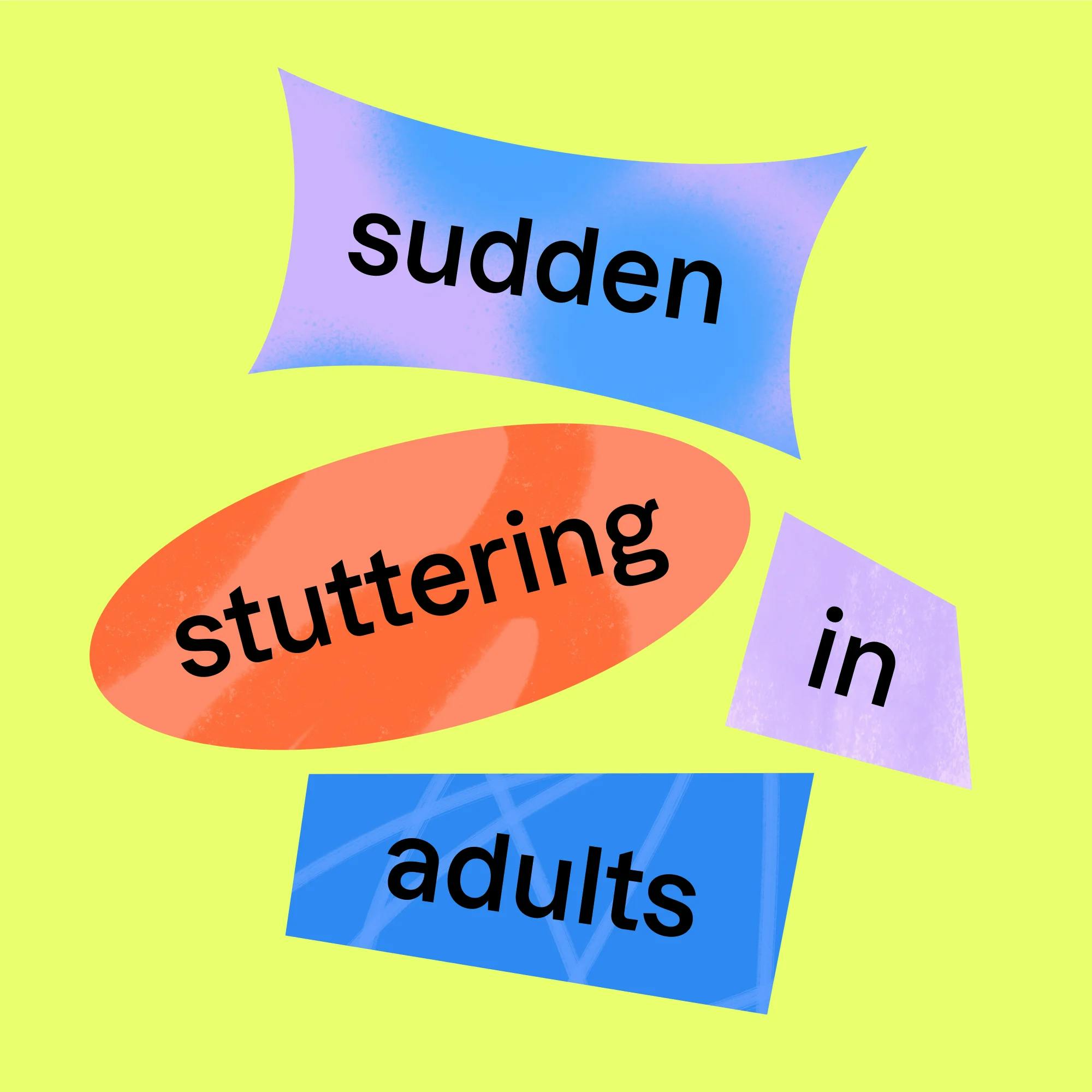Stuttering, also known as stammering, affects nearly 3 million people of all ages in the United States. As children begin to develop their language skills, up to 10% will experience a stutter for some period of their life.
The majority of children who stutter, about 75%, will outgrow their stutter over several months or years. For the remaining children, stuttering can persist into adulthood if left untreated, potentially turning into a lifelong communication disorder.
But what exactly are the causes of stuttering? Let's look at the risk factors and why stuttering occurs.


What is stuttering?
We all misspeak from time to time or repeat sounds when we talk. Occasional stutters or stammers (also called disfluencies) are not considered clinical stuttering. Clinical stuttering is when a person consistently produces disfluencies, or interrupted speech. A person who stutters has trouble producing sounds and words smoothly, or fluently.


What does stuttering sound like?
There are 3 different types of stuttering:
Repetitions: Repetitions are a type of disfluency where a word, syllable, or sound is repeated more than three times. Example: “I w-w-w-w-w-w-want to go to the store.”
Prolongations: Prolongations are a type of disfluency where a sound is prolonged or held for an abnormally long period of time. Example: “I fffffffffffffffffound a penny.”
Blocks: The last kind of stutter is called a block. When a block occurs, no sound is made in the mouth or throat. The parts of the mouth are stuck in one position and unable to continue to move for a period of time. Example: “I w------------------ant to go to the park.”
Now that we have covered the basic types of stuttering, let’s discuss some of the most common causes of stuttering.
What causes a stutter?
What does it mean when you have a stutter? Stuttering may have different causes in different people. Research is ongoing, but there a few factors that are likely to contribute to the development of stuttering.
Genetics and family history
Research has shown that there is likely some kind of genetic relation to stuttering. Case histories demonstrate that many people who stutter also have family members who stutter. However, the National Stuttering Association has stated that there doesn't seem to be a link between the severity of stuttering in family members.
In other words, a person may be more likely to stutter if they have family members who stutter. Yet each family member may have different levels of severity.
Motor planning and brain function
There is reason to believe that those who stutter have differences in speech-motor control, such as coordination and timing. Abnormalities in these areas can result in stuttering.
According to the National Stuttering Association, brain imaging studies have also shown that those who stutter have more right brain activity than left brain activity. Language is processed and planned in the left hemisphere. Less activity in the left brain may negatively impact a person’s speech fluency.
Language processing
There is research to suggest that stuttering could be connected to language processing and word retrieval, or finding the words we want to say. People who don't stutter have shown better abilities in receptive language, which means how we understand the words spoken to us, as well as word retrieval. Those who stutter have shown more problems tied to word finding. If a person has a hard time finding the words they want to use, it could increase their likelihood of stuttering, as their speech stalls and they feel pressured to talk.
Communication environment and emotions
It's not uncommon for those who stutter to have a tough time speaking in an environment that's tense or emotional. Likewise, some people may find that they stutter more often around people with certain personalities.
Because of heightened emotion or anxiety, breathing can sometimes become more shallow or inconsistent. The vocal tract and articulators may also have more tension, which can contribute to stuttering.


What physically happens during stuttering?
Now that we've covered some of the root causes of stuttering, let’s explore what physically happens in a stuttering event, and how this affects speech fluency.
Speech begins with breath. We inhale and we exhale. As we breathe out, our vocal folds come together and vibrate when we use our voice. The air we breathe out and the vocal folds work together to produce adequate sound. That sound is then shaped in the oral cavity to produce different types of sounds. For example, when we pronounce the /d/ sound, the tongue comes up and taps behind the teeth. When pronouncing /r/, the tongue tenses and moves backward in the mouth.
If there is tension in any area of the mouth or throat, this can cause stuttering.
If there is tension in any area of the mouth or throat, this can cause stuttering. For example, if a person is stuttering on the /d/ sound, and repeating it over and over, then there is likely tension in the tongue muscles.
If a person is trying to say the /f/ sound and it's coming out as a prolongation (example: “ffffffff”), then there could be tension in the lips or jaw contributing to the stutter.


Breathing exercises to help with stuttering
It's important to note that there could also be a lack of breath support involved. If we do not have enough air (breath) to speak on, it can feel like we're trying to squeeze out every sound. This can cause tension.
Appropriate breathing for speech is called diaphragmatic breathing. It's also referred to as belly breathing. This is because when we take diaphragmatic breaths, the diaphragm moves downward. This allows our lungs to expand as we breathe in, then moves back in place as we breathe out.
You can try this yourself. Before you take your first breath, place your hand on your belly. You should be able to feel your belly move out, then back in. If your hand moves in this pattern, you will know that you're breathing correctly!
When using this type of breathing during speech, make sure to control your breath. This means that you should be able to speak during one exhalation without feeling like you're running out of air. This takes practice for those who struggle in this area. However, once it is learned, it will do a lot to help the smoothness of your speech!


How to manage a stutter and speak more smoothly
There are many resources available for learning about stuttering, along with techniques you can practice at home or with a speech therapist to improve fluency. To start, we've compiled an in-depth resource guide that answers some of the most foundational questions about stuttering. We also offer a series of helpful videos from licensed speech therapists about stuttering in both children and adults. Finally, you can learn more about how Expressable treats stuttering in this helpful guide.
How Expressable Can Help
Concerned your child isn't reaching age-expected milestones? Looking for communication support from a professional? Expressable is a national online speech therapy practice serving children and adults. We treat all major areas of communication and feeding, offer flexible hours including evenings and weekends, and accept most major health insurance plans. We’re proud to have earned more than 3,000 5-star reviews from our clients (4.9/5 average).
Our therapy model is centered on parent and caregiver involvement. Research proves that empowering caregivers to participate in their loved one’s therapy leads to better outcomes. That’s why we combine live, 1-on-1 speech therapy with personalized education and home practice activities for faster progress.
Communication is more than words. It’s how we share how we feel and show who we are. We’re here to help you or your child do just that.
 Abby Barnes, M.S., CCC-SLP
Abby Barnes, M.S., CCC-SLP











